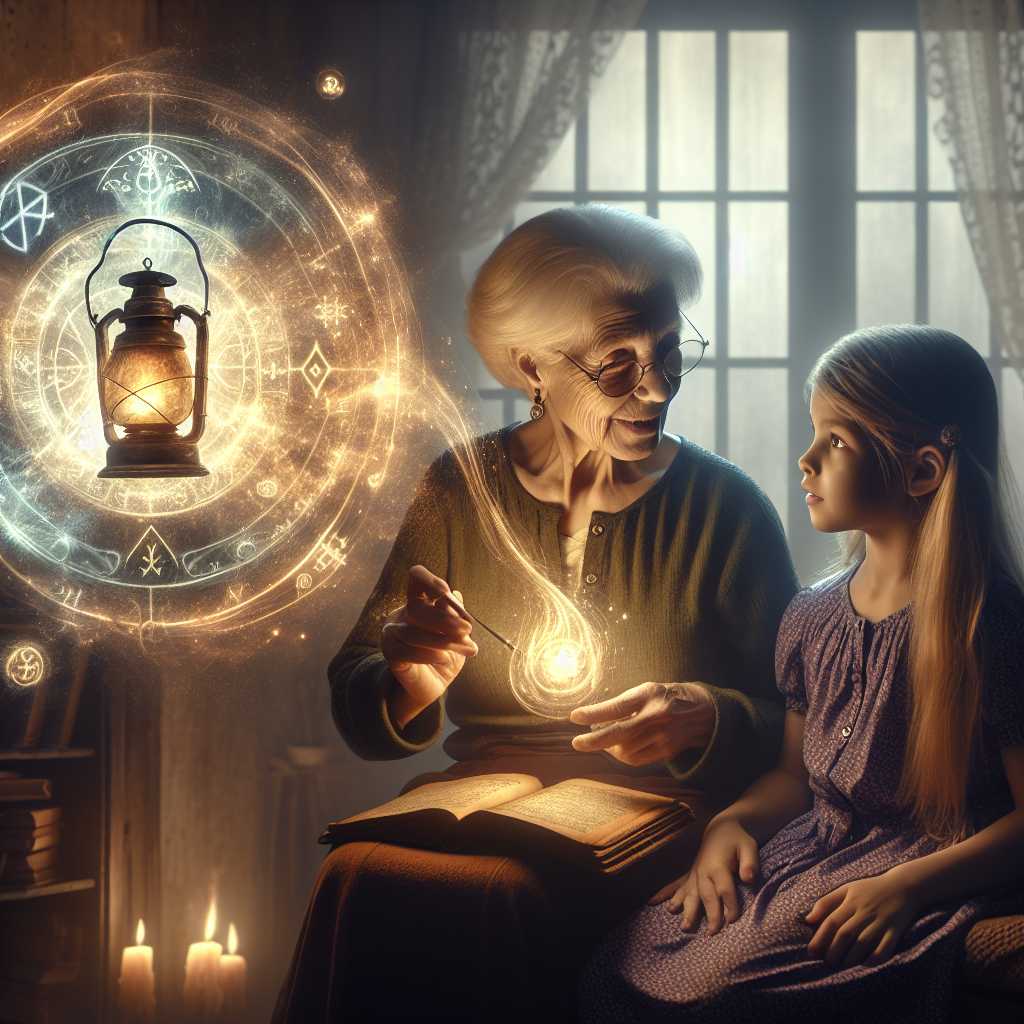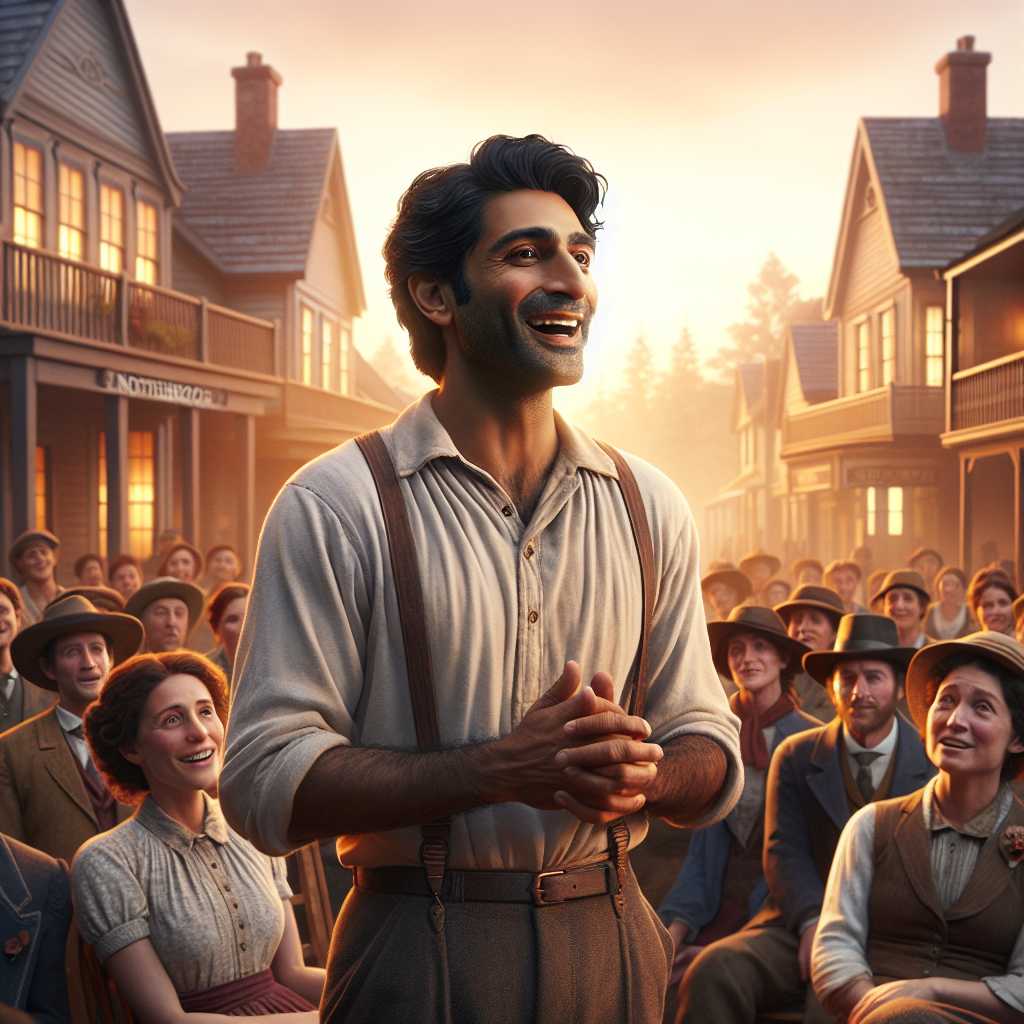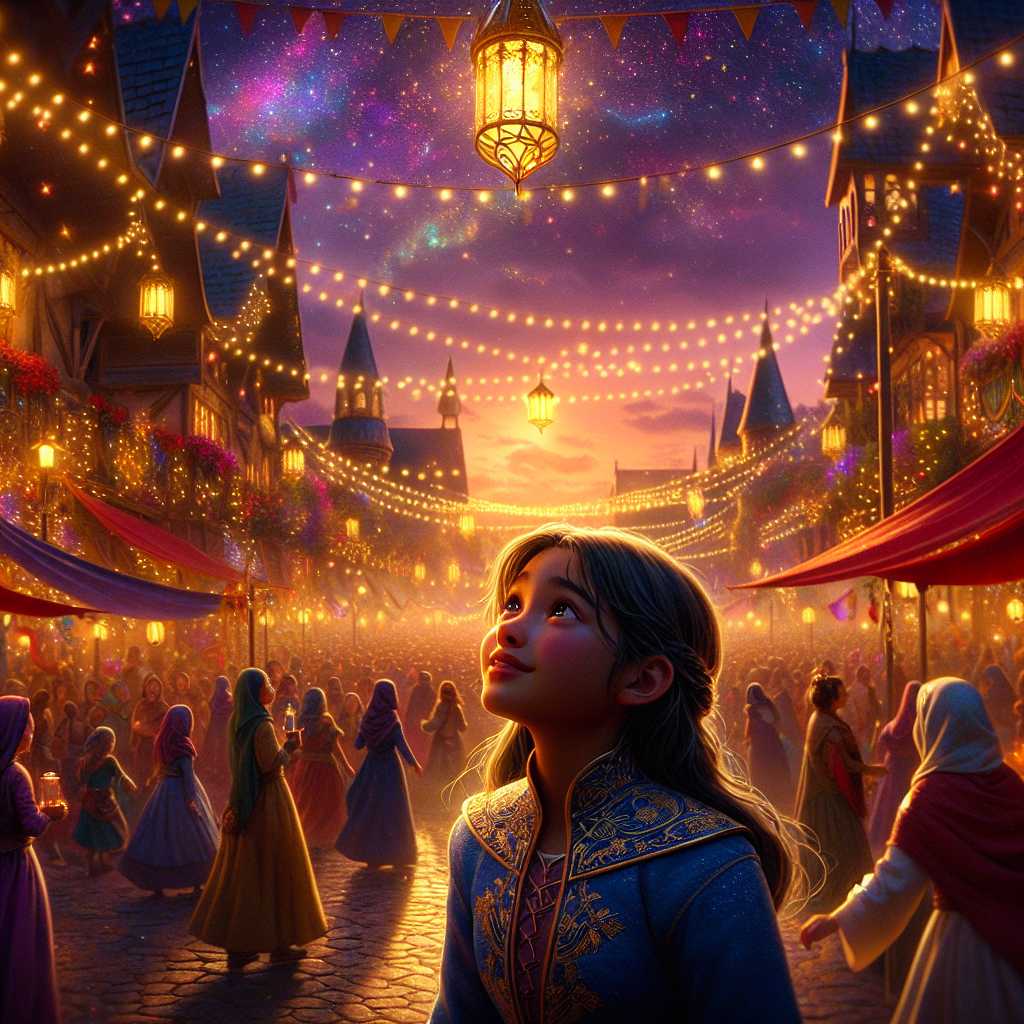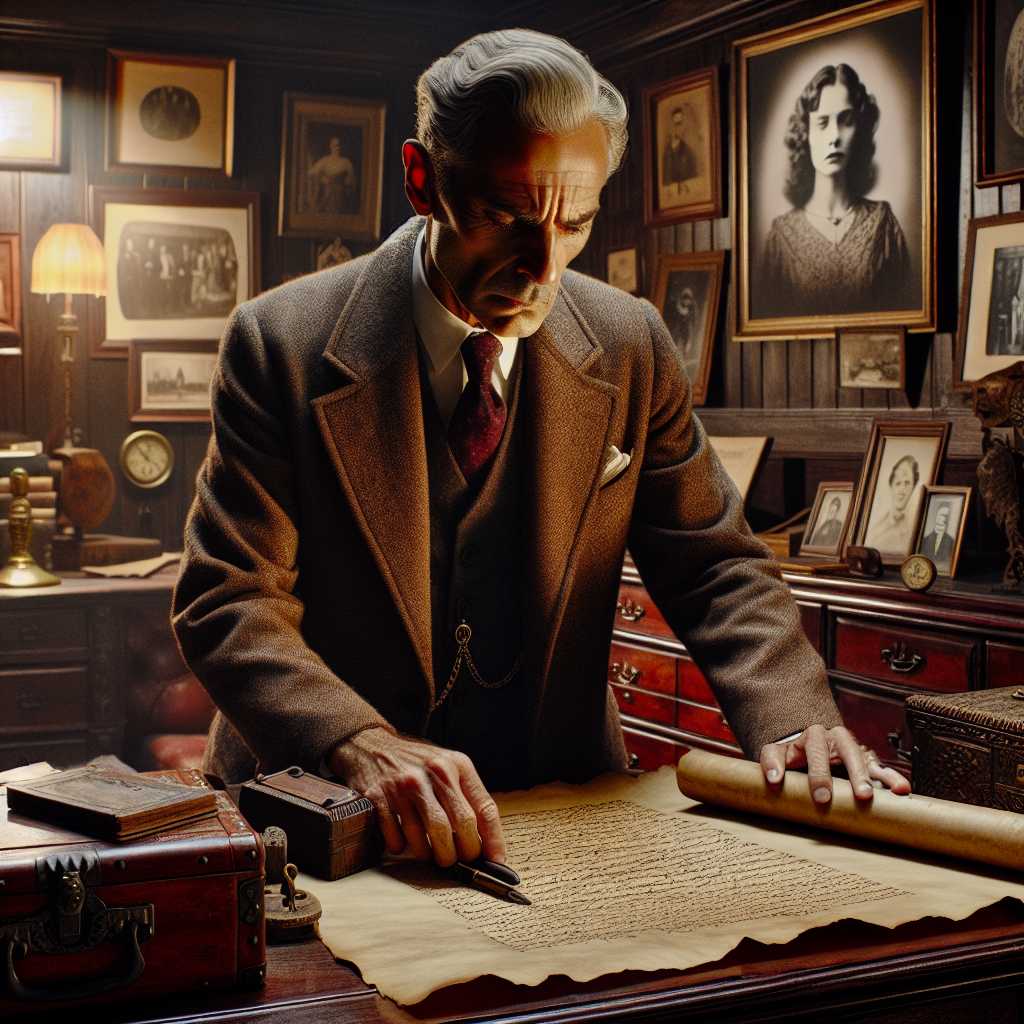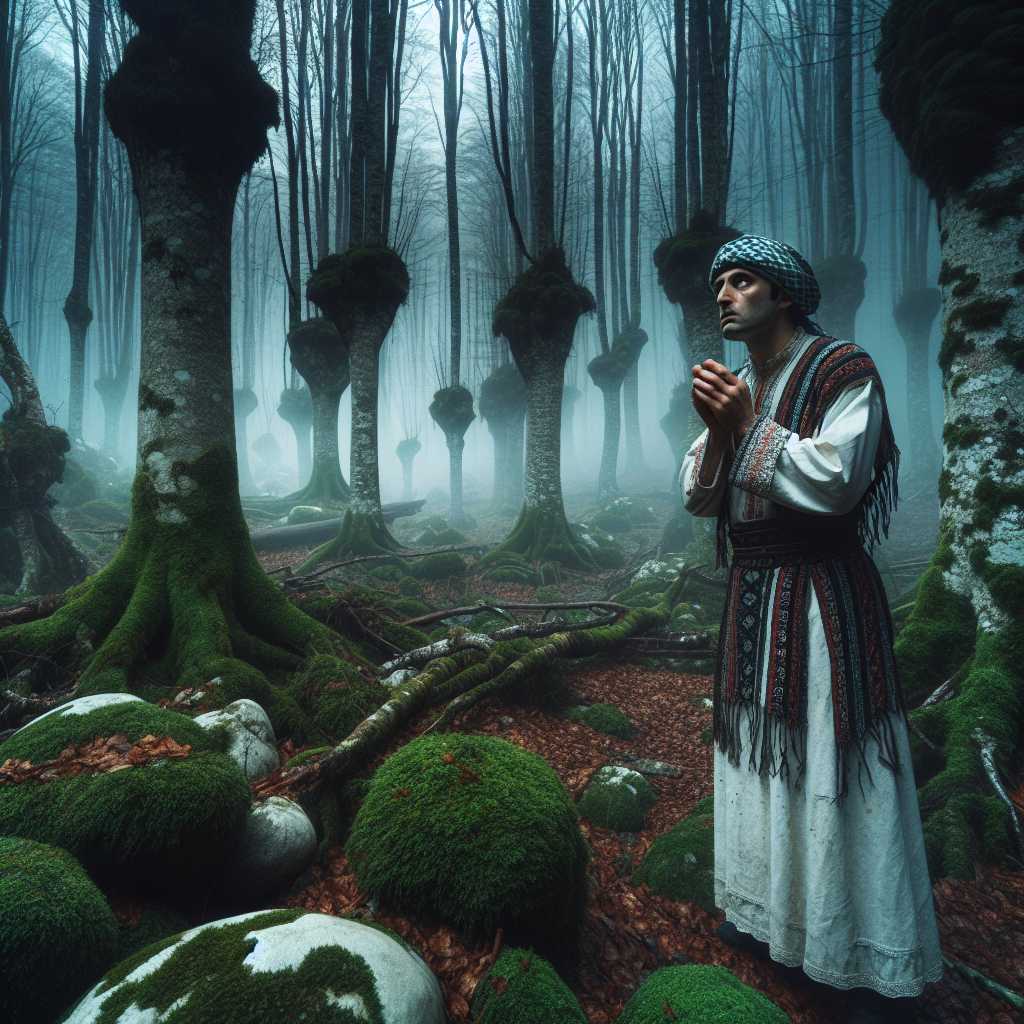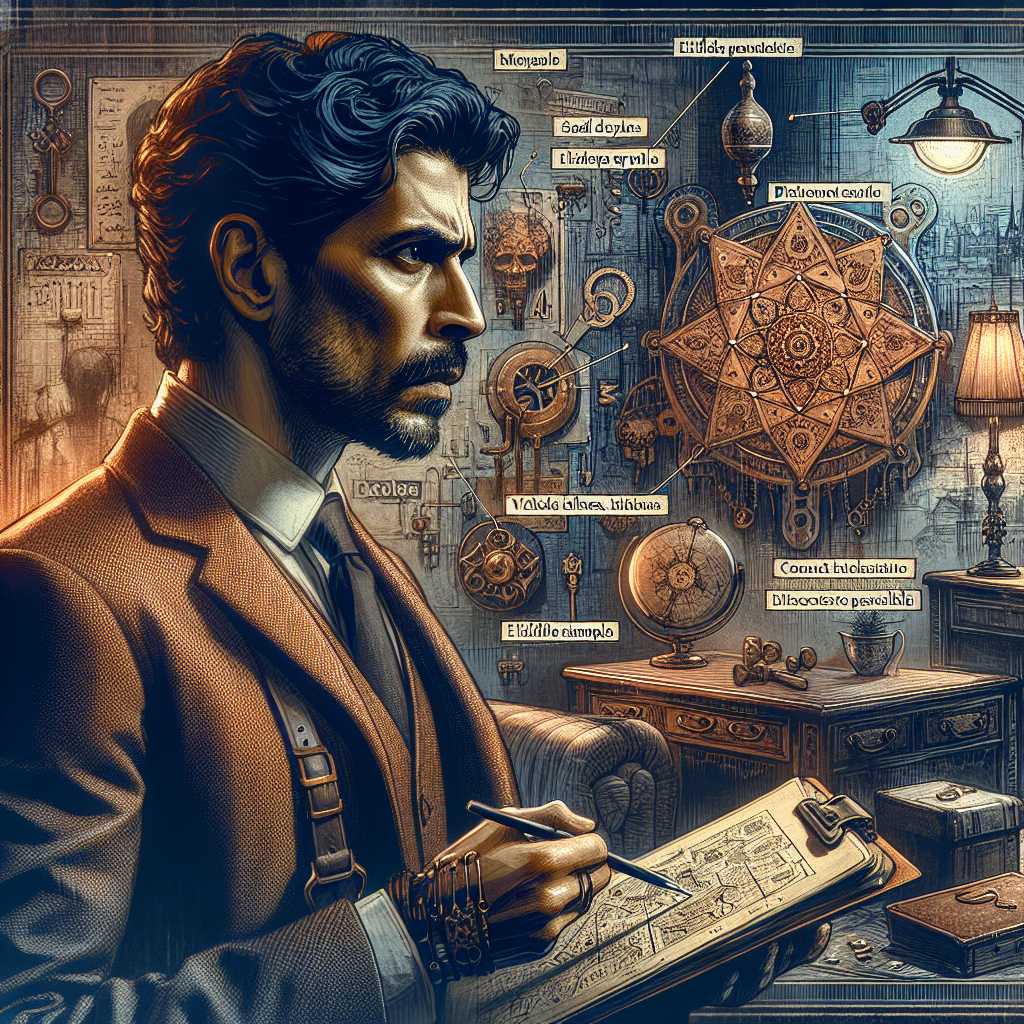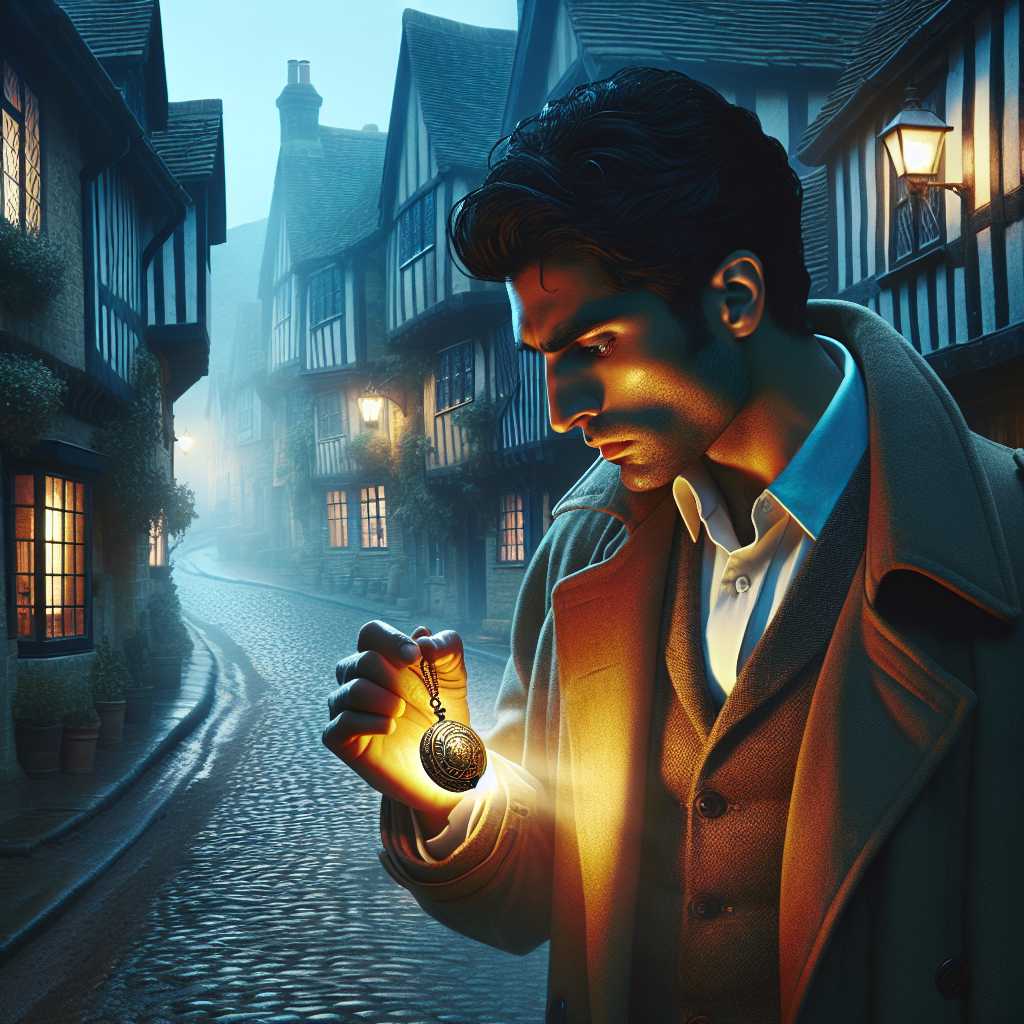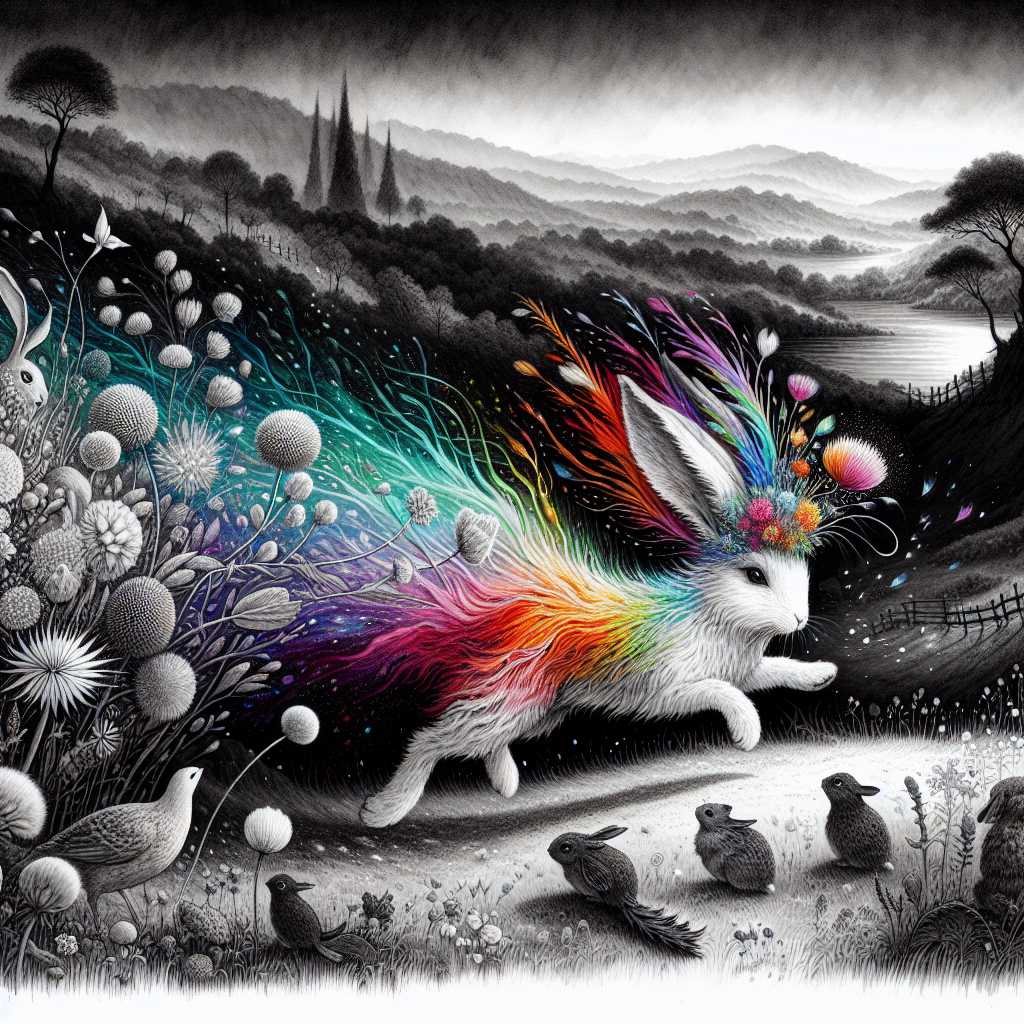
In the heart of the Monochrome Forest, where colors dared not dwell and the trees whispered ancient secrets, there lived a peculiar rabbit named Thistle. Unlike the usual inhabitants of the forest, Thistle was not devoid of color. His fur was the softest shade of lavender, a stark contrast to the grayscale world around him.
Thistle had always known he was different, but he had never understood why. The other forest creatures often shunned him, believing his colorful appearance was an omen of change, something the Monochrome Forest had feared for centuries.
One dull, gray morning, as Thistle explored the edges of the forest, he stumbled upon an object that would forever alter the course of his life. Buried beneath a pile of fallen, colorless leaves was a small, intricately carved box. It was the most beautiful thing Thistle had ever seen—adorned with swirls and patterns that seemed to dance in the light. What’s more, it was colored.
With his heart pounding with excitement and a slight tremble in his paws, Thistle opened the box. Inside, there was nothing but a single, vibrantly colored feather. The moment Thistle’s paw touched the feather, the world around him began to transform. Colors he had never seen began to bleed into the world around him, turning the monochrome into a kaleidoscope of colors.
But with great beauty came great danger. The ancient guardian of the Monochrome Forest, a colossal owl named Argent, was awakened by the sudden burst of color. Argent had been tasked with preserving the colorlessness of the forest, a job which he had performed diligently for countless generations.
“Who dares disturb the balance of the Monochrome Forest?” Argent’s voice boomed, echoing through the newly colored woods.
Thistle, with the colored feather still in paw, stepped forward. “It was I, but I meant no harm. I only wished to see the world in color,” he said, his voice barely above a whisper.
Argent, with eyes as silver as the moon, fixed his gaze upon Thistle. “The colors you seek come with a price. Can you bear the weight of change, young one?”
Thistle, realizing the color had not only changed the forest but stirred its very essence, nodded. “I can. And I will rectify my mistake, but I need guidance. Will you help me, Argent?”
Argent, moved by Thistle’s courage and sincerity, agreed. Together, they embarked on a quest to restore the Monochrome Forest, all the while protecting its newfound vibrance from those who yearned for the monotonous safety of the past.
Their journey led them to the heart of the forest, to a place where the very fabric of color and grayness intertwined—a glade where time itself seemed to halt. Here, Argent explained, was the source of the forest’s colorlessness, a magical well of ancient ink.
“To restore balance, we must blend the ink with the color from your feather. Only then can the forest embrace change without losing itself,”Argent said, his voice soft, almost melancholy.
Thistle, understanding the significance of his task, dipped the colored feather into the well. As the ink and color merged, a blinding light erupted, enveloping everything.
When the light subsided, Thistle and Argent found themselves in a forest unlike any other. It was neither entirely color nor devoid of it. The trees, animals, and even the sky above found harmony in a delicate balance of gray and color. It was a new Monochrome Forest, one that embraced change while honoring its past.
“What have we done, Argent?” Thistle asked, his eyes wide with wonder.
“We have created a new beginning, Thistle. A place where everyone belongs, and where differences are not feared but celebrated. This is your legacy.”
Thistle’s heart swelled with pride and joy. He had started his journey feeling out of place, a lone spot of color in a gray world. Now, he stood as a symbol of unity and change, a bridge between what was and what could be.
From that day forward, Thistle and Argent worked together to guide the inhabitants of the forest through this transition. They taught them that color was not something to fear but to embrace, for it was a part of the very essence of life.
And as for Thistle, he never again felt alone or misplaced. In a world that had learned to see the beauty in diversity, Thistle found his purpose and his home.
The Monochrome Forest was no more, but in its place stood a testament to the power of change and the beauty of color in a world that had once known only shades of gray.
And so, the tale of Thistle and the Monochrome Forest became a story told throughout generations, a reminder that even the smallest change can bring about the most beautiful transformations.



